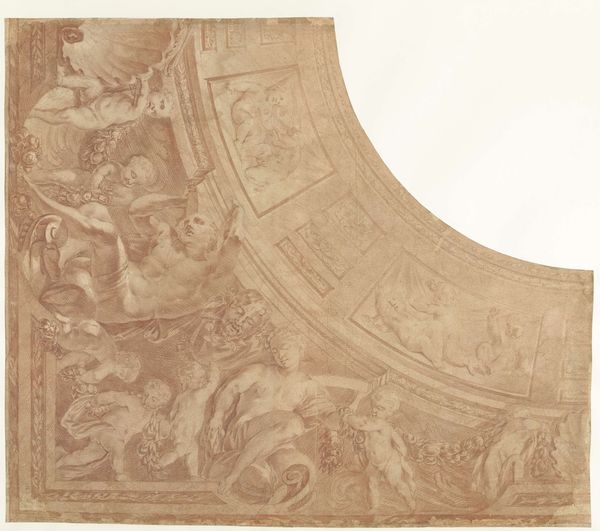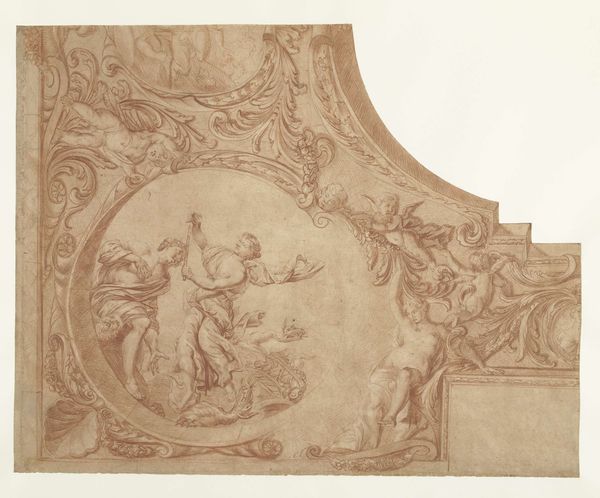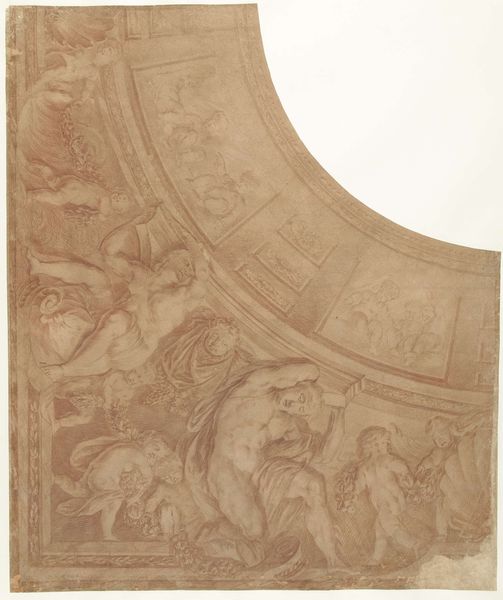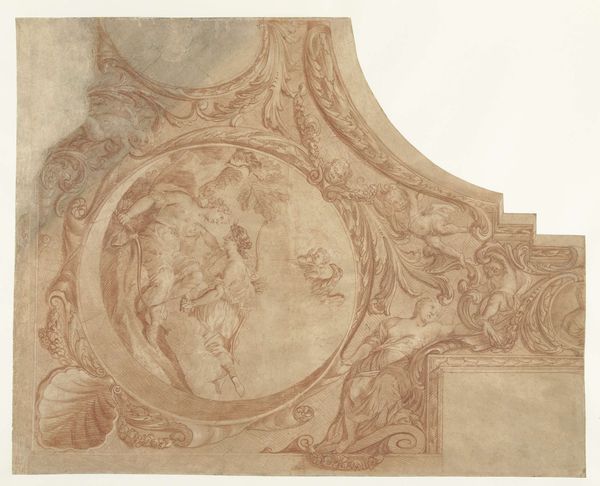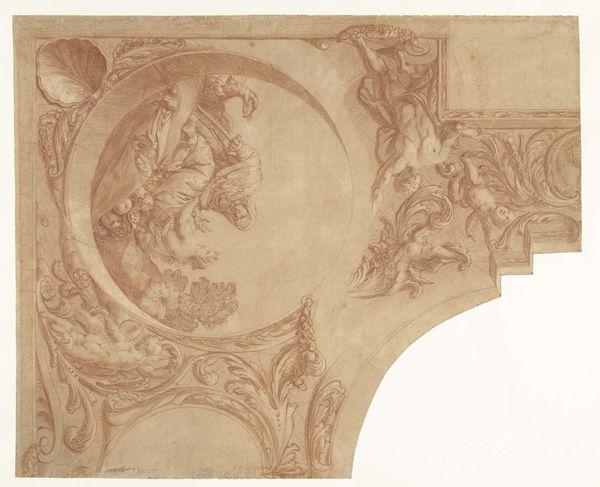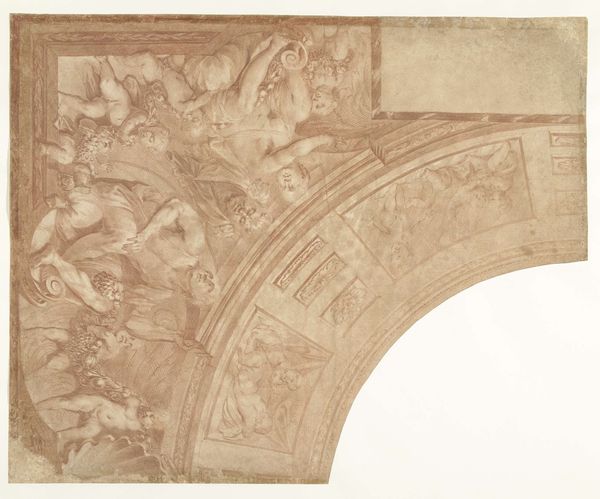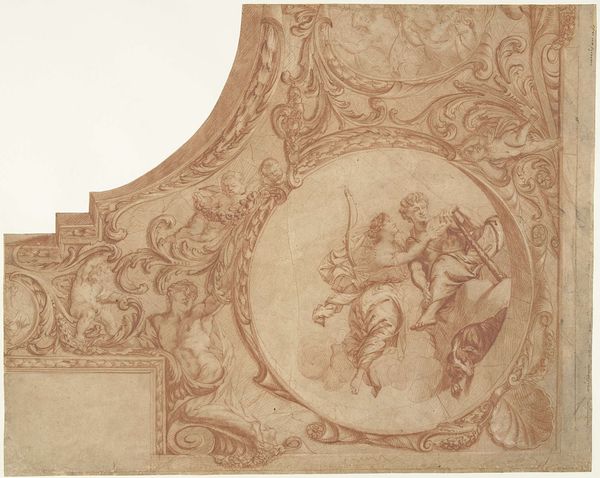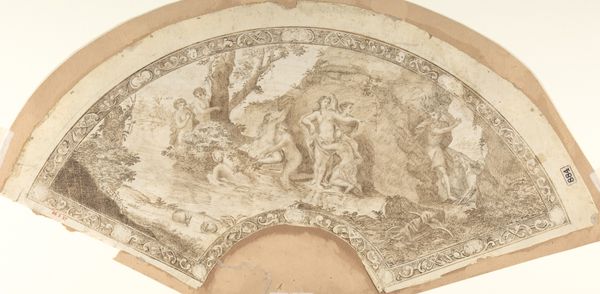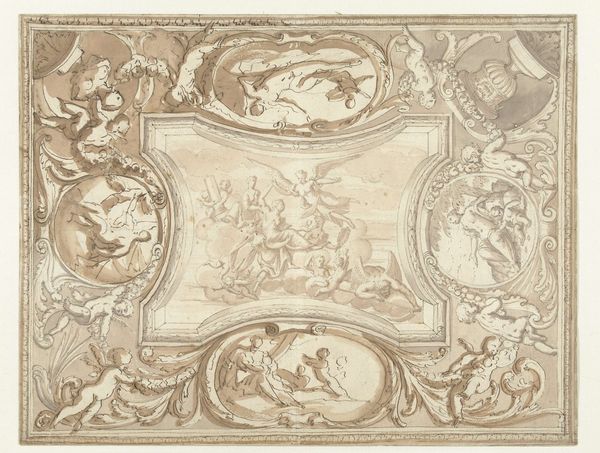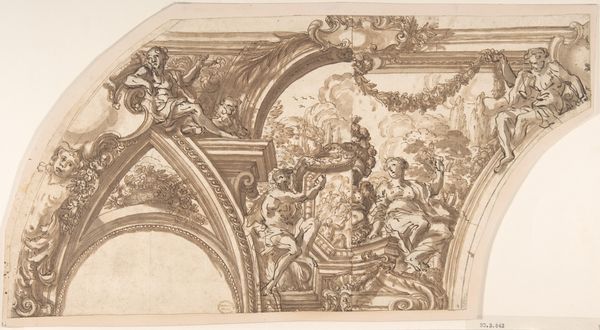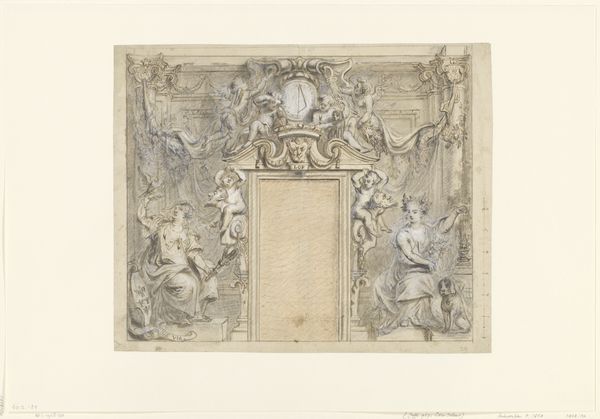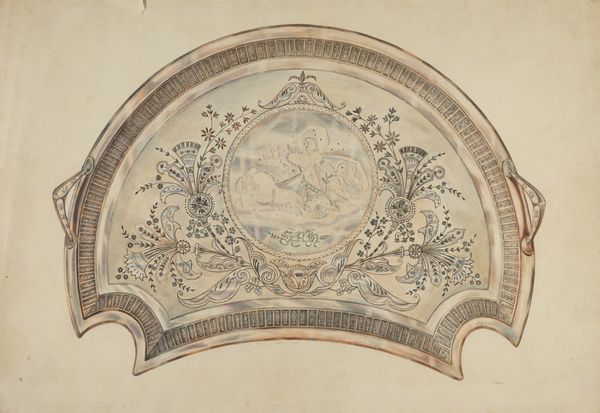
Ontwerp voor een hoekstuk van een plafond met zittende figuren, putti en buste van vrouw 1680 - 1757
0:00
0:00
mattheusterwesten
Rijksmuseum
drawing, charcoal
#
drawing
#
allegory
#
baroque
#
charcoal drawing
#
figuration
#
11_renaissance
#
charcoal
#
history-painting
#
decorative-art
Dimensions: height 625 mm, width 527 mm
Copyright: Rijks Museum: Open Domain
Editor: This is "Ontwerp voor een hoekstuk van een plafond met zittende figuren, putti en buste van vrouw," a charcoal drawing by Mattheus Terwesten, dating roughly from 1680 to 1757. It feels almost ghostly, a fleeting vision of classical forms. What do you see in this piece? Curator: It's fascinating to consider this drawing as a document of artistic labor. Look at the material reality of the charcoal, likely relatively inexpensive, used to design something intended for lavish, presumably commissioned, ceiling decoration. Think about the socio-economic structure this implies: a skilled artist like Terwesten using accessible materials to propose a vision of luxury for wealthy patrons. Editor: So you’re thinking about the relationship between the drawing and the potential final product? Curator: Exactly. This drawing embodies the process, the planning stage. We see the means by which Terwesten imagined this grand allegorical scene. How would the final ceiling have transformed the *labor* invested in the charcoal sketch? How would the shift in materials – from charcoal to paint, plaster, or even stucco – alter the viewing experience? Editor: That’s interesting! I hadn’t considered the materials as part of a larger economic picture. Curator: And beyond the economic aspect, consider the skill involved in translating such a delicate sketch into a durable, large-scale ceiling. This connects 'high art' with craftsmanship, blurring boundaries. The putti, the female bust…they’re not just allegorical figures, they're products of both artistic and material choices. What stories can the raw materials tell us, beyond the artistic composition? Editor: I see. This makes me think about how much we value the finished piece but rarely think about the artistic labor and accessible material that are just as interesting. Thanks for sharing that point of view! Curator: Of course! And hopefully, this way of viewing also helps to demystify art, showing its intrinsic connection to materials and working practices.
Comments
No comments
Be the first to comment and join the conversation on the ultimate creative platform.
